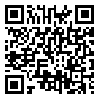Volume 6, Issue 4 (OCTOBER 2007)
Payesh 2007, 6(4): 0-0 |
Back to browse issues page
Download citation:
BibTeX | RIS | EndNote | Medlars | ProCite | Reference Manager | RefWorks
Send citation to:



BibTeX | RIS | EndNote | Medlars | ProCite | Reference Manager | RefWorks
Send citation to:
Behjati Ardakani Z., Akhondi M.M., Milanifar A.R., Modaberi Y., Chamani Tabriz L., Moeeni M. et al . Counseling, evaluation and screening of donor and recipient in third party reproduction and the matching process. Payesh 2007; 6 (4)
URL: http://payeshjournal.ir/article-1-695-en.html
URL: http://payeshjournal.ir/article-1-695-en.html
Behjati Ardakani Z. 
 , Akhondi M.M.
, Akhondi M.M. 
 , Milanifar A.R.
, Milanifar A.R. 
 , Modaberi Y.
, Modaberi Y. 
 , Chamani Tabriz L.
, Chamani Tabriz L. 
 , Moeeni M.
, Moeeni M. 
 , Ghorbani B.
, Ghorbani B. 


 , Akhondi M.M.
, Akhondi M.M. 
 , Milanifar A.R.
, Milanifar A.R. 
 , Modaberi Y.
, Modaberi Y. 
 , Chamani Tabriz L.
, Chamani Tabriz L. 
 , Moeeni M.
, Moeeni M. 
 , Ghorbani B.
, Ghorbani B. 

Abstract: (7167 Views)
Objective(s): Development of Assisted Reproductive Technologies (ART) and the successful birth of the first child in 1978, new therapeutic options have become available for infertile couples. Development of IVF methods made conception and embryo formation possible for the infertile, something impossible by then. ART has also brought about the possibility of third party involvement in the process of reproduction. This may occur by providing an egg, a sperm, an embryo or a uterus by a third party.
Results: To use a donated gamete requires an evaluation and screening of the health of both donors and recipients in order to make any necessary adjustment regarding physical characteristics and specifications, blood group, social and cultural traits and religious requirements. All these ought to be in accordance with relevant rules and regulations. As ART methods enables women over 40 to conceive and bear child, meticulous evaluations of physical health, pregnancy risk factors and in particular emotional readiness of the couples is necessary. The very first step in the treatment of infertility using a substitute gamete is to inform the couple of the method of gamete and embryo supplement and the way the embryo will form in vitro. This may lessen their worries, make the procedure safer, reduce possible ethnic hazards, increase the success rate and finally bring the expenses involved to an efficient level.
Other aspects that should be considered, since they may give the couple a sense of confidence are a religious and legal counseling, technique explanation, confidentiality of identities of recipients and donors None of the said aspects should be overlooked.
Health evaluation could be undertaken by a history review, physical examination, infection tests, genetics and general medicine consultation.
Conclusion: Phonotypical characteristics of the recipient such as height, weight, skin color; hair color will be matched with donor according upon recipient’s request. Although, in most cases, matching blood group is not medically compulsory but it might be required in some cases. In many cases, recipients are interested in raising questions regarding particularities of the donor like their beliefs, social and cultural status, intelligence quota education on which a donation clinic should be cooperate.
Results: To use a donated gamete requires an evaluation and screening of the health of both donors and recipients in order to make any necessary adjustment regarding physical characteristics and specifications, blood group, social and cultural traits and religious requirements. All these ought to be in accordance with relevant rules and regulations. As ART methods enables women over 40 to conceive and bear child, meticulous evaluations of physical health, pregnancy risk factors and in particular emotional readiness of the couples is necessary. The very first step in the treatment of infertility using a substitute gamete is to inform the couple of the method of gamete and embryo supplement and the way the embryo will form in vitro. This may lessen their worries, make the procedure safer, reduce possible ethnic hazards, increase the success rate and finally bring the expenses involved to an efficient level.
Other aspects that should be considered, since they may give the couple a sense of confidence are a religious and legal counseling, technique explanation, confidentiality of identities of recipients and donors None of the said aspects should be overlooked.
Health evaluation could be undertaken by a history review, physical examination, infection tests, genetics and general medicine consultation.
Conclusion: Phonotypical characteristics of the recipient such as height, weight, skin color; hair color will be matched with donor according upon recipient’s request. Although, in most cases, matching blood group is not medically compulsory but it might be required in some cases. In many cases, recipients are interested in raising questions regarding particularities of the donor like their beliefs, social and cultural status, intelligence quota education on which a donation clinic should be cooperate.
type of study: Descriptive |
Accepted: 2018/11/28 | Published: 2007/10/15
Accepted: 2018/11/28 | Published: 2007/10/15
| Rights and Permissions | |
 |
This work is licensed under a Creative Commons Attribution-NonCommercial 4.0 International License. |



